

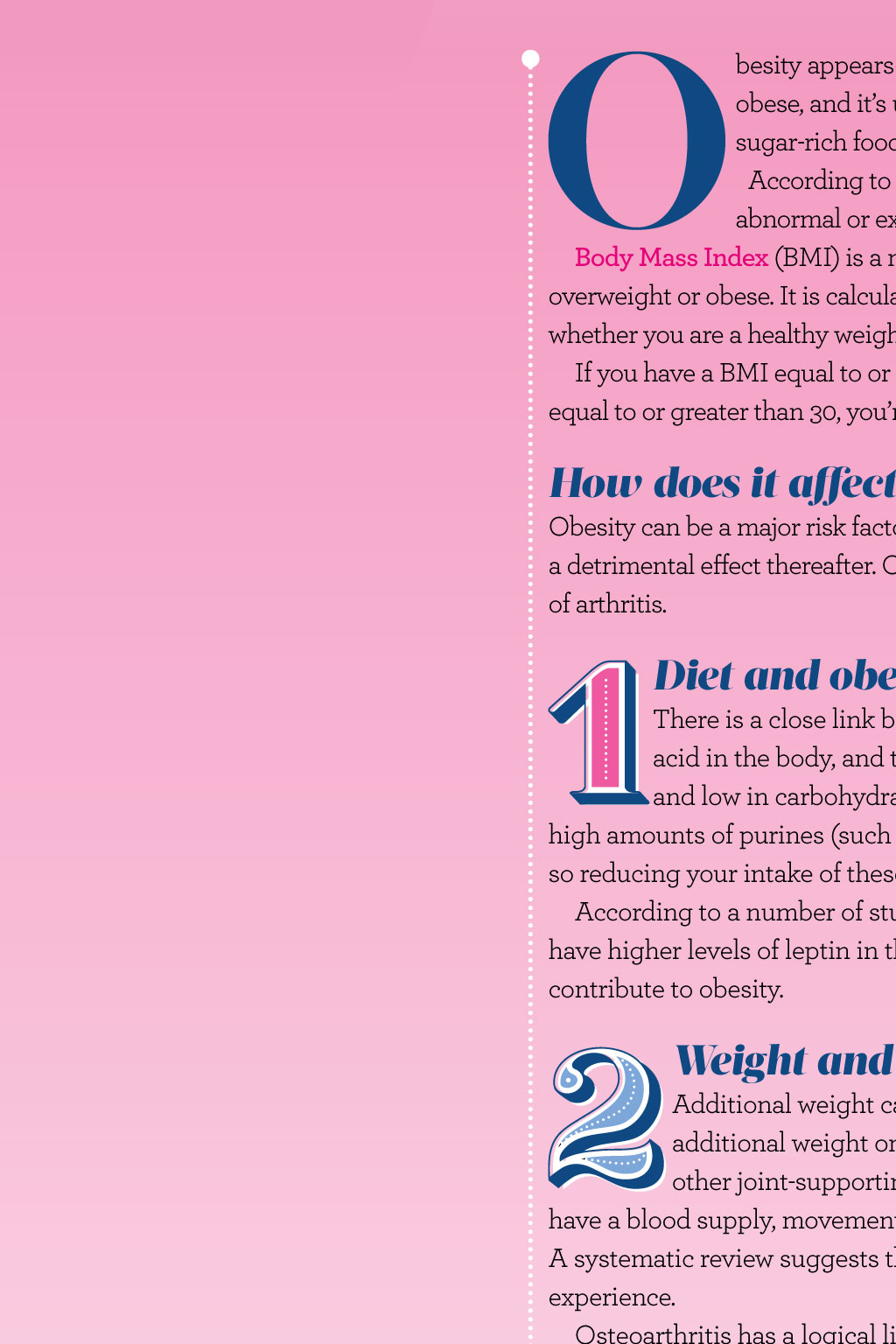
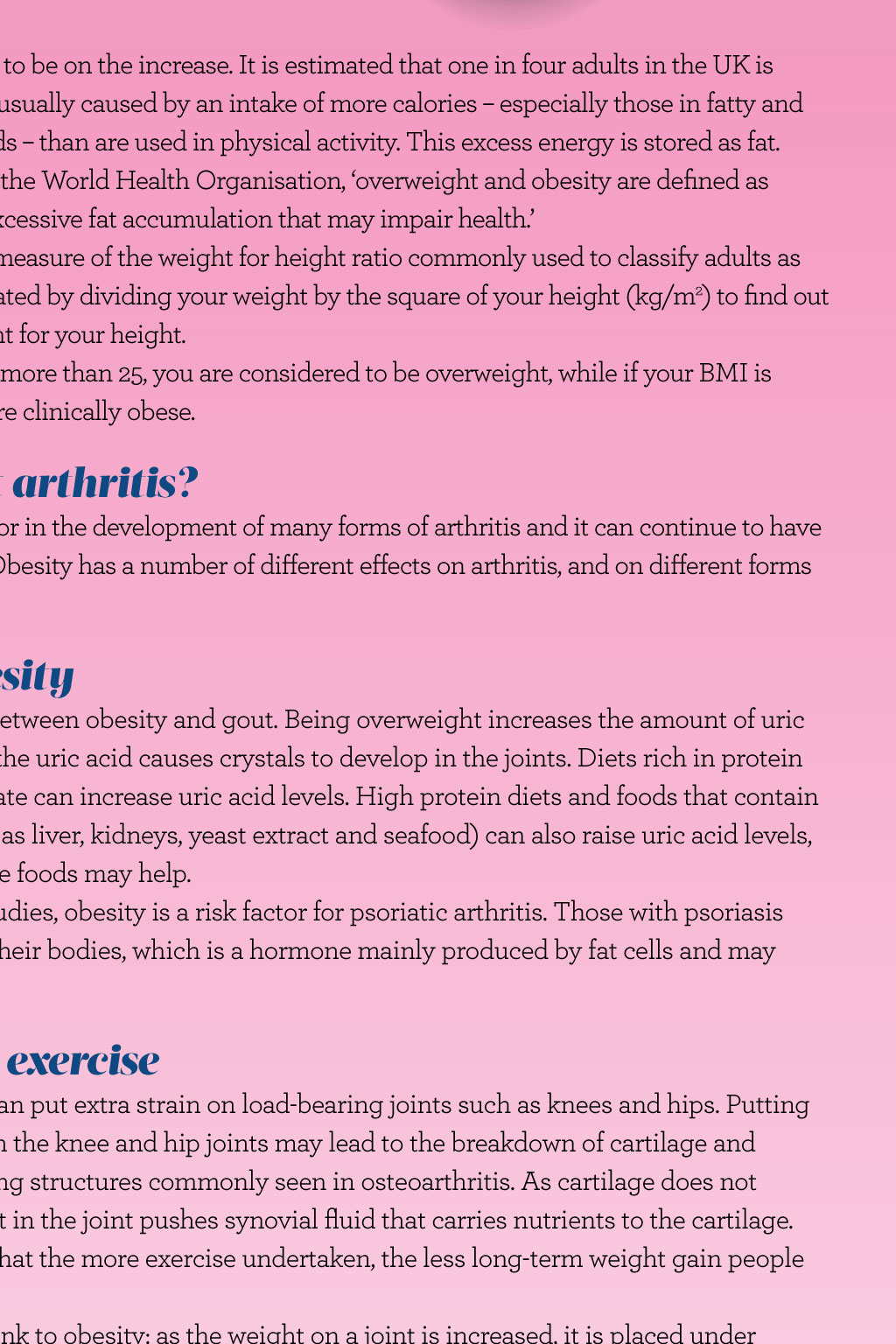
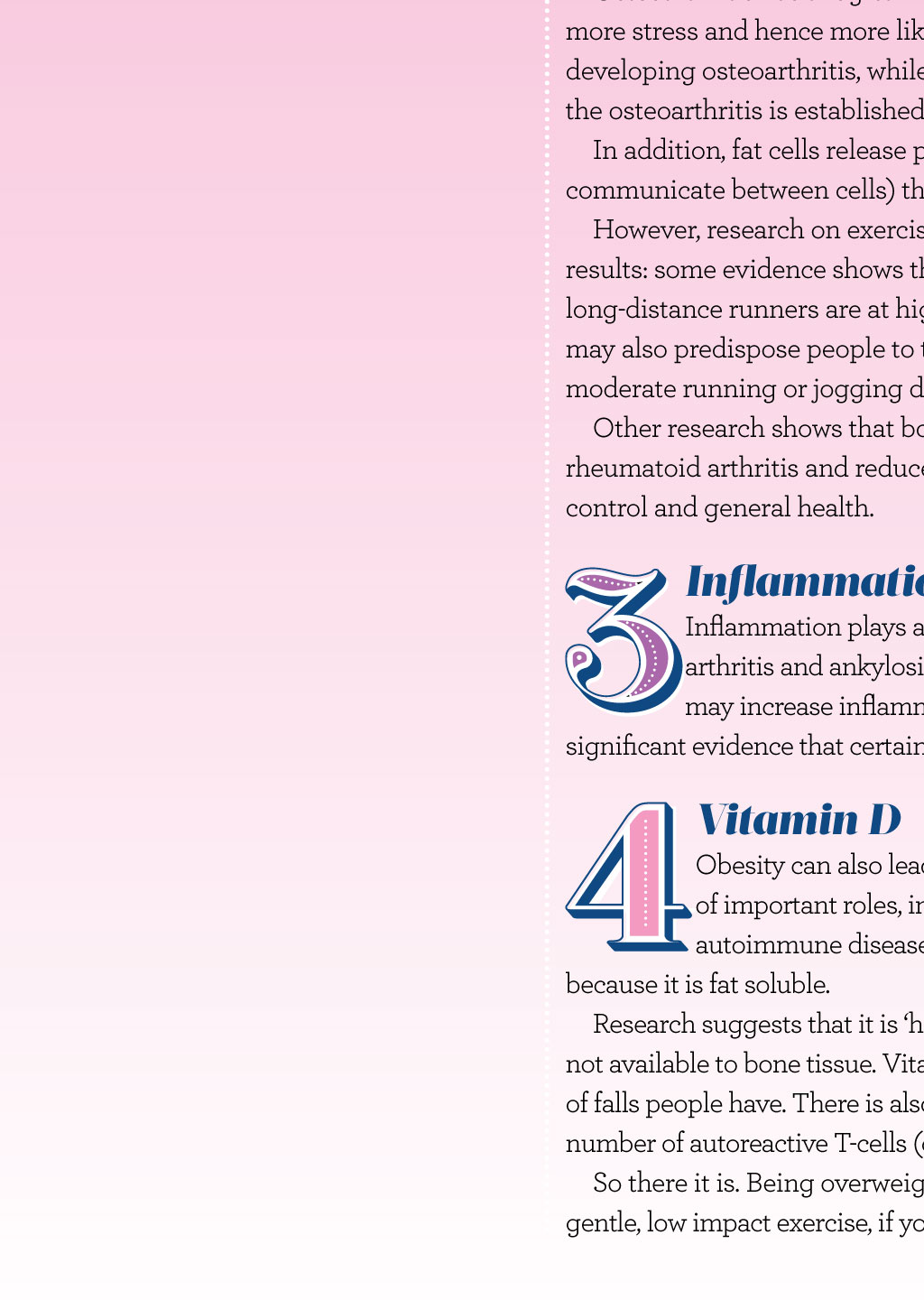
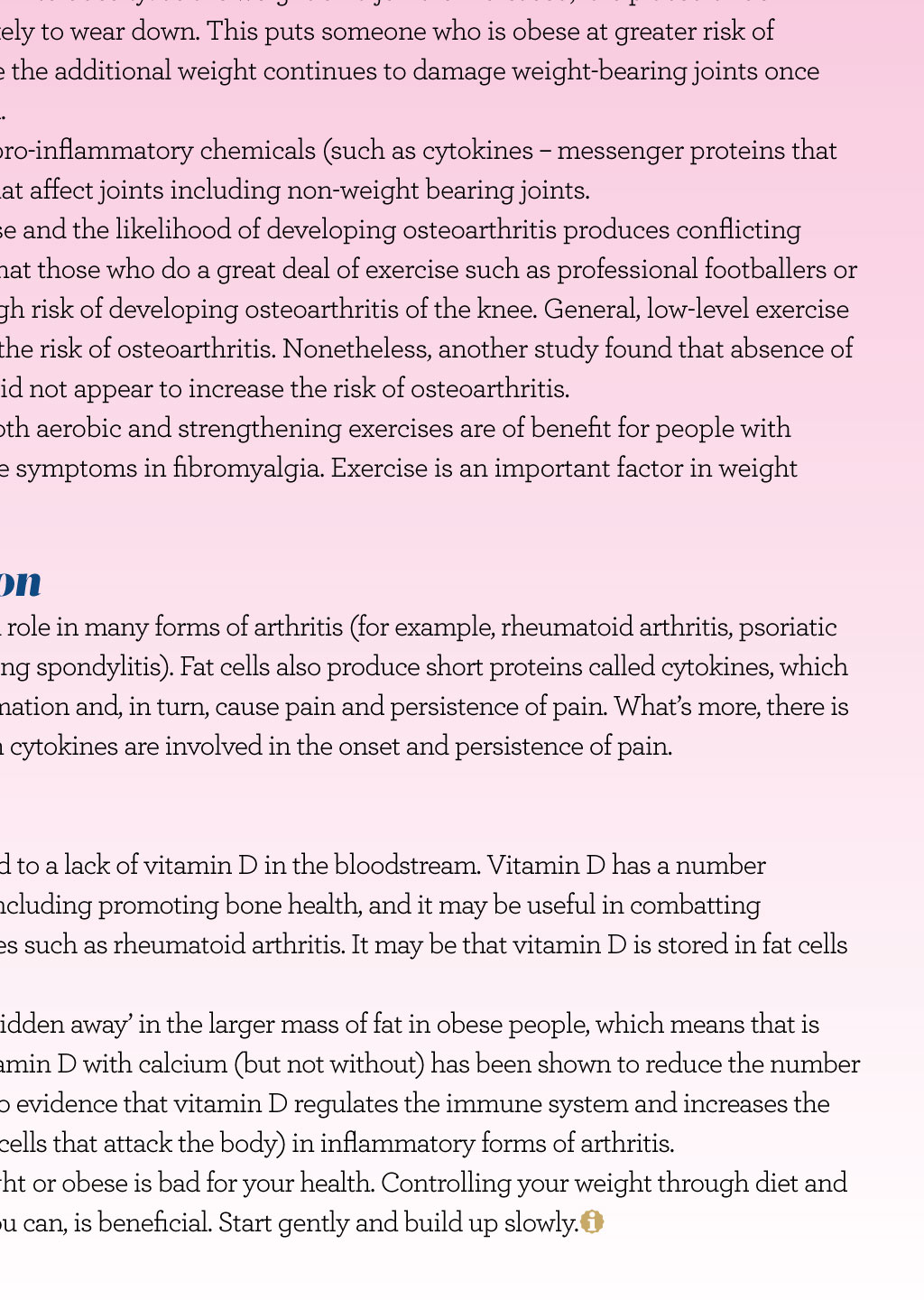






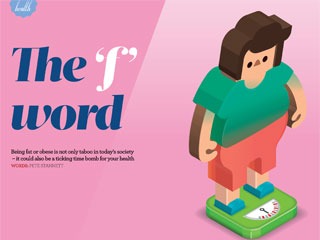
The f word Being fat or obese is not only taboo in todays society it could also be a ticking time bomb for your health words: Pete Stannett O besity appears to be on the increase. It is estimated that one in four adults in the UK is obese, and its usually caused by an intake of more calories especially those in fatty and sugar-rich foods than are used in physical activity. This excess energy is stored as fat. According to the World Health Organisation, overweight and obesity are defined as abnormal or excessive fat accumulation that may impair health. Body Mass Index (BMI) is a measure of the weight for height ratio commonly used to classify adults as overweight or obese. It is calculated by dividing your weight by the square of your height (kg/m2) to find out whether you are a healthy weight for your height. If you have a BMI equal to or more than 25, you are considered to be overweight, while if your BMI is equal to or greater than 30, youre clinically obese. How does it affect arthritis? Obesity can be a major risk factor in the development of many forms of arthritis and it can continue to have a detrimental effect thereafter. Obesity has a number of different effects on arthritis, and on different forms of arthritis. Diet and obesity There is a close link between obesity and gout. Being overweight increases the amount of uric acid in the body, and the uric acid causes crystals to develop in the joints. Diets rich in protein and low in carbohydrate can increase uric acid levels. High protein diets and foods that contain high amounts of purines (such as liver, kidneys, yeast extract and seafood) can also raise uric acid levels, so reducing your intake of these foods may help. According to a number of studies, obesity is a risk factor for psoriatic arthritis. Those with psoriasis have higher levels of leptin in their bodies, which is a hormone mainly produced by fat cells and may contribute to obesity. Weight and exercise Additional weight can put extra strain on load-bearing joints such as knees and hips. Putting additional weight on the knee and hip joints may lead to the breakdown of cartilage and other joint-supporting structures commonly seen in osteoarthritis. As cartilage does not have a blood supply, movement in the joint pushes synovial fluid that carries nutrients to the cartilage. A systematic review suggests that the more exercise undertaken, the less long-term weight gain people experience. Osteoarthritis has a logical link to obesity: as the weight on a joint is increased, it is placed under more stress and hence more likely to wear down. This puts someone who is obese at greater risk of developing osteoarthritis, while the additional weight continues to damage weight-bearing joints once the osteoarthritis is established. In addition, fat cells release pro-inflammatory chemicals (such as cytokines messenger proteins that communicate between cells) that affect joints including non-weight bearing joints. However, research on exercise and the likelihood of developing osteoarthritis produces conflicting results: some evidence shows that those who do a great deal of exercise such as professional footballers or long-distance runners are at high risk of developing osteoarthritis of the knee. General, low-level exercise may also predispose people to the risk of osteoarthritis. Nonetheless, another study found that absence of moderate running or jogging did not appear to increase the risk of osteoarthritis. Other research shows that both aerobic and strengthening exercises are of benefit for people with rheumatoid arthritis and reduce symptoms in fibromyalgia. Exercise is an important factor in weight control and general health. Inflammation Inflammation plays a role in many forms of arthritis (for example, rheumatoid arthritis, psoriatic arthritis and ankylosing spondylitis). Fat cells also produce short proteins called cytokines, which may increase inflammation and, in turn, cause pain and persistence of pain. Whats more, there is significant evidence that certain cytokines are involved in the onset and persistence of pain. Vitamin D Obesity can also lead to a lack of vitamin D in the bloodstream. Vitamin D has a number of important roles, including promoting bone health, and it may be useful in combatting autoimmune diseases such as rheumatoid arthritis. It may be that vitamin D is stored in fat cells because it is fat soluble. Research suggests that it is hidden away in the larger mass of fat in obese people, which means that is not available to bone tissue. Vitamin D with calcium (but not without) has been shown to reduce the number of falls people have. There is also evidence that vitamin D regulates the immune system and increases the number of autoreactive T-cells (cells that attack the body) in inflammatory forms of arthritis. So there it is. Being overweight or obese is bad for your health. Controlling your weight through diet and gentle, low impact exercise, if you can, is beneficial. Start gently and build up slowly.